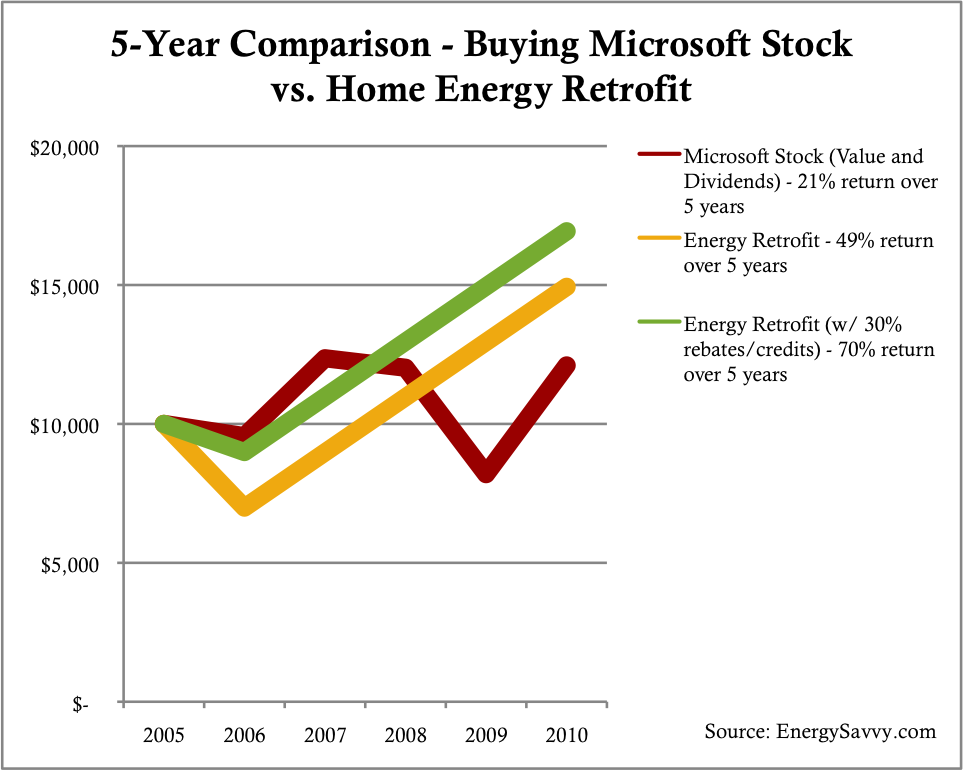For years, energy-efficiency advocates have been beating their head against a wall. Efficiency saves money, reduces emissions, creates jobs, and enhances economic competitiveness. It ought to be the first item on the energy policy list — the “first fuel,” as they say — and the subject of broad bipartisan consensus. And yet … it’s not. Instead it’s mostly ignored or given lip service. Even the fairly strong efficiency provisions in the Waxman-Markey climate and energy bill passed last summer by the House were a fraction of what could profitably be achieved.
Yesterday that finally began to change, as the House passed the Home Star Energy Retrofit Act of 2010 (H.R. 5019) by a bipartisan vote of 246-161. Home Star will provide homeowners with rebates for energy-efficiency upgrades — a total of $6 billion over two years.
An unprecedented coalition
There’s a lot to say about the substance of the program (which has been covered on Grist before), but one of the more remarkable aspects of this story is the business and political coalition that came together behind it. The House vote was bipartisan; there are two Republican cosponsors in the Senate (Scott Brown of Massachusetts and Lindsey Graham of South Carolina); there’s a huge list of businesses big and small supporting it. Most remarkable, though, is a fact that Bracken Hendricks of the Center for American Progress clued me into yesterday. The U.S. Chamber of Commerce and the National Association of Manufacturers — two of the most conservative business groups in the country and ardent foes of climate legislation — not only came out in support of the bill, they made it part of their scorecards.
Says NAM: “The NAM’s Key Vote Advisory Committee has indicated that all votes related to H.R. 5019, including procedural motions, may be considered for designation as Key Manufacturing Votes in the 111th Congress.” Says the CoC: “The Chamber urges the House to approve this legislation, and may consider including votes on, or in relation to, this legislation in our annual How They Voted scorecard.”
You have to know a little inside-D.C. baseball to appreciate how huge of a deal this is. These groups loathe environmentalists and environmental regulations of every kind. They are some of the fiercest and most effective foes of the environmental lobby. And yet they have joined with the League of Conservation Voters in deeming this a crucial Yes vote! I bet there aren’t more than two or three bills in history that could say the same.
Win-win-win-win-etc.
Why is Home Star causing lions and lambs to lay down together? Because it Just. Makes. Sense. It hits a whole range of political and economic sweet spots.
First, its benefits are highly visible and tangible and they go straight to voters, which is good for the politicians who passed it. Second, energy retrofits substantially lower homeowners’ monthly bills, which is an absolute lifeline during an economic crisis, putting money in consumer pockets where it then gets spent, serving as economic stimulus. Third, because it reduces bills it will reduce defaults and foreclosures, a boon to the ailing real estate and finance industries. Fourth, it creates thousands of jobs in the residential construction trades, which are suffering the highest rates of unemployment of virtually any industry in the country. Fifth, both the homeowners and the contractors involved in these retrofits will learn that reducing carbon pollution can be a sensible and profitable undertaking; they will become constituents in support of more ambitious measures.
And oh yeah, the program reduces the use of coal, oil, and natural gas and the emission of CO2.
Unlike some other energy-related policies, which can have unpredictable effects, the net social benefit of Home Star is all but guaranteed. Home energy retrofits are one of the rare investments that provide returns both substantial and completely reliable. For kicks, here’s a comparison of the return on $10,000 invested five years ago in Microsoft stock vs. home retrofits:
It’s a slightly goofy comparison but it makes the point. And what the chart doesn’t show is that retrofit investments keep paying, year after year, for the life of the home. Once they have paid themselves back they become, effectively, new and reliable sources of income.
See here for much more on the benefits of the program to a crazily wide range of groups and stakeholders.
(Also worth noting: despite the manifest benefits of the bill, right-wing House Republicans still managed to be giant dicks about it. That crew would pee on Tinkerbell if they thought it would upset a Democrat.)
The mechanics
The bill itself is quite cleverly constructed. There’s the Silver Star track, which is a conventional rebate program that offers homeowners up to 50 percent back on the cost of efficiency purchases like windows or boilers (up to $1,500 per purchase, capped at $3,000). Then there’s the Gold Star track, which offers up to $3,000 to homeowners who conduct whole-house energy audits and implement a package of measures that reduce their total energy use by at least 20 percent; for each additional 5 percent there’s another $1,000, capped at $8,000.
Gold Star is the big deal here. Its purpose is to create demand that can aggregate and scale up the home retrofit industry; with scale comes jobs, reduced costs, and serious emission reductions.
Interestingly (and laudably), $200 million of the money is set aside to support existing state-level financing programs like PACE, on-bill financing, and others. As I’ve said many times, financing to overcome the up-front costs of energy-efficiency investments — which, even with rebates, can be daunting — is crucial to accelerating consumer uptake.
There are also a range of quality-control, auditing, and verification measures in the bill. Everyone involved, especially the home-retrofit companies themselves, is extremely keen to establish consumer confidence in retrofits early, to build a solid foundation for the industry’s expansion. No one wants a bunch of newspaper stories about shoddy work or benefits that never materialize. (This has been emphasized by everyone I’ve talked to about the bill.)
What next?
The coalition is optimistic about the bill’s fate. They expect a Senate vote, conference committee, appropriations, and a presidential signature by Memorial Day.
There’s also a decent chance that a companion bill — Building Star, focused on commercial buildings — could get a vote this year.
Imagine, if you will, when the next spike in oil prices comes (and it will most certainly come). Perhaps instead of panicking and rushing to drill more offshore, Obama will have a different response available: “With the rise in prices we need more than ever to reduce our dependence on oil. That’s why I’m calling for an immediate tripling of the Home Star program, which through energy efficiency will save more oil than we could ever recover from our fragile coastal waters, and at a savings to American consumers.”
Wouldn’t that be nice?



